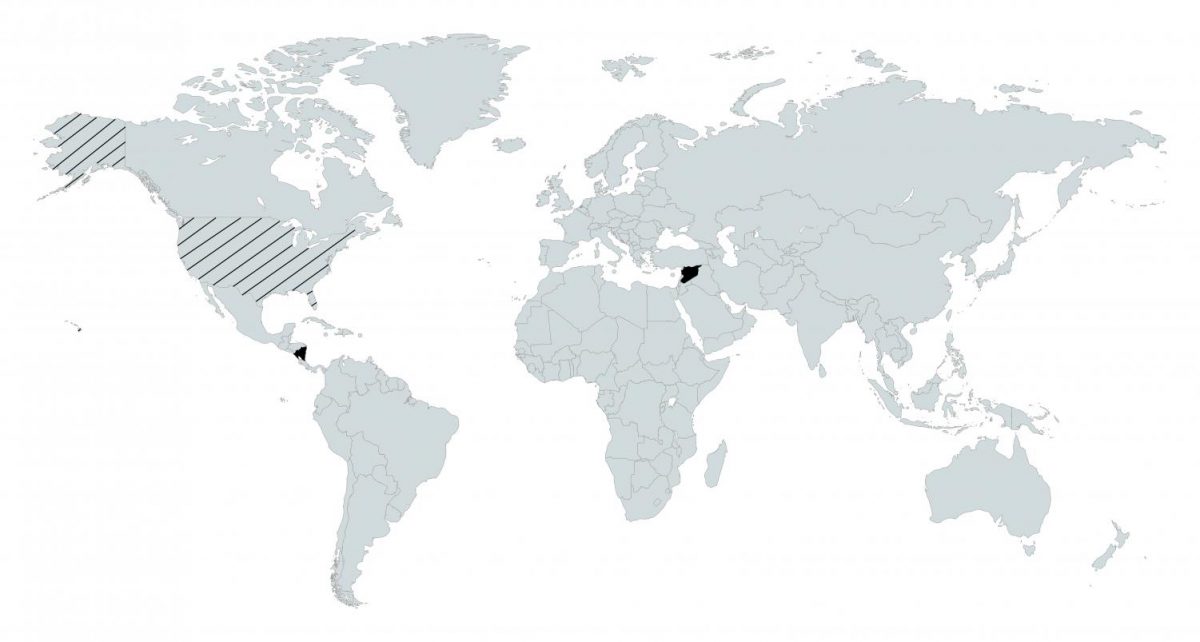Climate Change Update: Where the U.S. Stands
President Trump is hoping to withdraw the U.S. (in stripes) from the Paris Agreement, which would put the U.S. with two other countries: Syria and Nicaragua (in black).
September 28, 2017
In the wake of Hurricanes Harvey and Irma, climate scientists are suggesting that human activity dramatically intensified the behavior of the storms and are urging for restrictions and regulations with regards to global climate change.
In 2015, 195 countries signed the Paris Agreement establishing an international effort to limit the global average temperature increase to 1.5 degrees Celsius. When establishing goals for the Agreement, all the countries involved agreed to be transparent and meet every five years to re-evaluate international goals to ensure action will be taken.
The Trump administration’s announcement to cede from the Paris Agreement on June 1st, 2017 was controversial to many CRLS students. Senior Pascal Beckert commented, “France and the rest of the world have shown the United States how to lead on climate change, while the United States has fallen behind.”
President Trump has called climate change a “hoax,” which is seemingly the U.S.’s main reason for withdrawing from the Agreement. Sophomore Sydney Down says she is concerned that “Trump’s decision only puts the U.S. in a position of isolation and takes us a step backwards from combating global warming.” The United States is joining a group of only two countries that are not a part of the Paris Agreement: Nicaragua and Syria.
On June 19th, 2017 following the United States’ proposal to withdraw, the European Council declared that the Paris Agreement will not remain up for negotiation, and the Council plans to distribute 100 billion USD to developing countries per year starting in 2020 in order to combat climate change.
On August 22nd, 2017, the European Council released a statement reaffirming Europe’s stance on climate change.
The media flurried with rumors on September 16th that claimed the U.S. would not withdraw from the Agreement, but White House Press Secretary Sarah Sanders tweeted: “Our position on the Paris agreement has not changed. @POTUS has been clear, US withdrawing unless we get pro-America terms.”
As of 2007, the United States represents 5% of the world population, but uses 30% of Earth’s natural resources. While the Agreement seems to many like a step toward tackling climate change, the withdrawal of the United States has impacted the likelihood of achieving ambitious yet tangible global climate goals.
The United States Climate Alliance was created by Governors Andrew Cuomo (New York), Jay Inslee (Washington), and Jerry Brown (California) in response to the United States’ decision to withdraw. The organization is bipartisan, with representatives from twelve states and Puerto Rico.
At CRLS, many feel that citizens must take it upon themselves to act urgently in order to ensure prosperity and sustainability.
AP Environmental Science teacher Ms. Stomberg reflects, “We can’t wait for politicians to decide how we approach climate change. We have to continue to start acting individually, locally, and at a state level.”
Junior Antonio Escallón believes that “joining the Global Awareness Club may help us achieve our goals and make a bigger impact on the community.”
While United States political support is crucial in reducing carbon dioxide emissions and consuming less of the world’s finite natural resources, community members are stressing the importance of contributing on a local level.
This piece also appears in our September print edition.










